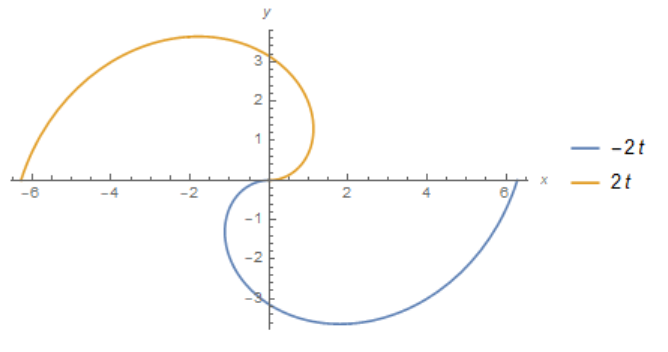I tried to plot the function $r=-2t$ with $t$ in $[0,2\pi]$:
PolarPlot[-2 t, {t, 0, 2 Pi}, AxesLabel -> {x, y}]
When $t=\pi/4$, I have:
$$r=-\pi/2=-1.57$$
Through Get Coordinates, I saw the only point so that $r=-1.57$ is $("-"1.57, \,\, 3.9...)$. Why is the angle $3.9..=\pi+(\pi/4)$ different from $t=\pi/4$?
How can I get the above angle by using math formulas? I can't use the classic relationship $tan(t)=y/x$ because I don't know x and y (without looking the plot).
Thank you so much in advance.


